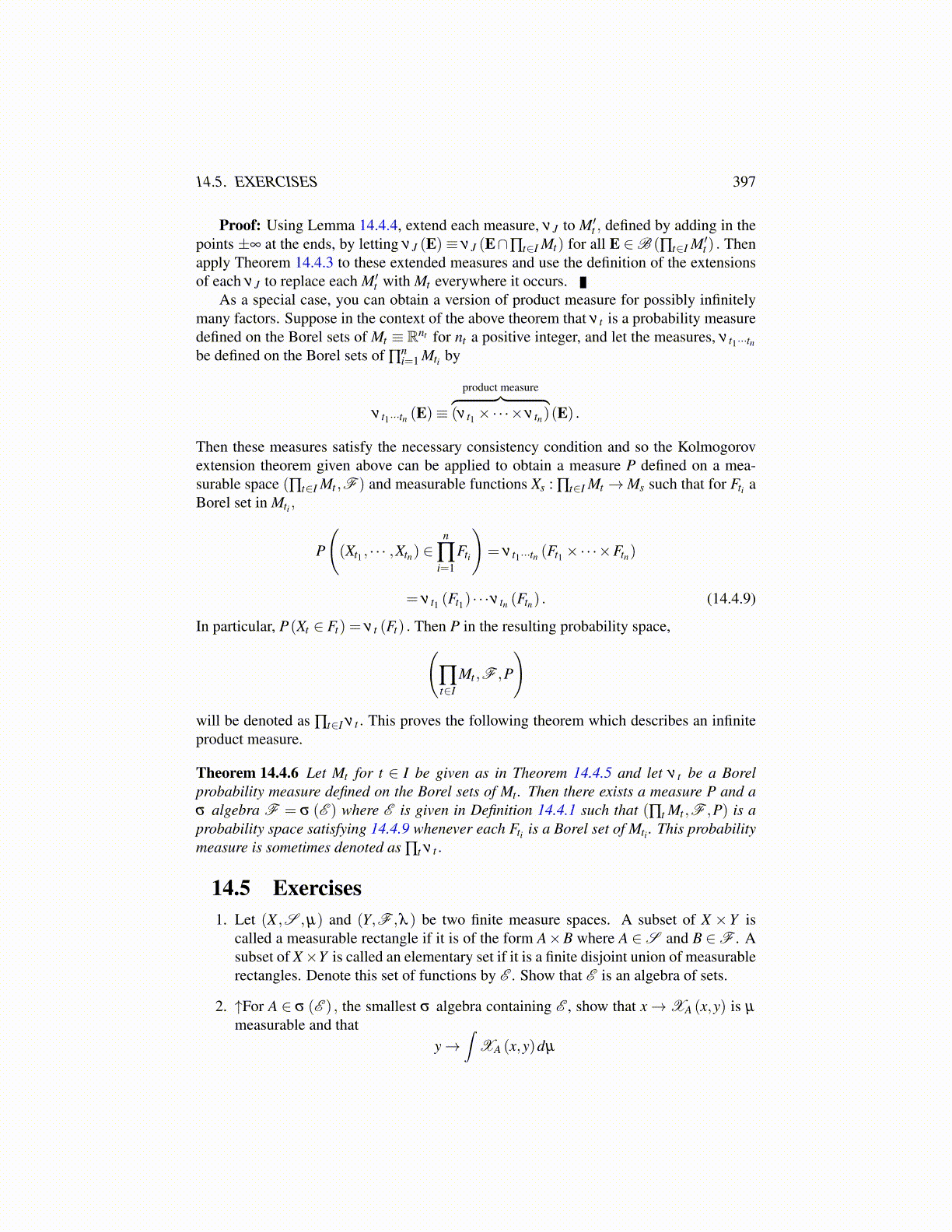
14.5. EXERCISES 397
Proof: Using Lemma 14.4.4, extend each measure, νJ to M′t , defined by adding in thepoints ±∞ at the ends, by letting νJ (E)≡ νJ (E∩∏t∈I Mt) for all E ∈B (∏t∈I M′t ) . Thenapply Theorem 14.4.3 to these extended measures and use the definition of the extensionsof each νJ to replace each M′t with Mt everywhere it occurs.
As a special case, you can obtain a version of product measure for possibly infinitelymany factors. Suppose in the context of the above theorem that ν t is a probability measuredefined on the Borel sets of Mt ≡ Rnt for nt a positive integer, and let the measures, ν t1···tnbe defined on the Borel sets of ∏
ni=1 Mti by
ν t1···tn (E)≡
product measure︷ ︸︸ ︷(ν t1 ×·· ·×ν tn)(E) .
Then these measures satisfy the necessary consistency condition and so the Kolmogorovextension theorem given above can be applied to obtain a measure P defined on a mea-surable space (∏t∈I Mt ,F ) and measurable functions Xs : ∏t∈I Mt →Ms such that for Fti aBorel set in Mti ,
P
((Xt1 , · · · ,Xtn) ∈
n
∏i=1
Fti
)= ν t1···tn (Ft1 ×·· ·×Ftn)
= ν t1 (Ft1) · · ·ν tn (Ftn) . (14.4.9)
In particular, P(Xt ∈ Ft) = ν t (Ft) . Then P in the resulting probability space,(∏t∈I
Mt ,F ,P
)
will be denoted as ∏t∈I ν t . This proves the following theorem which describes an infiniteproduct measure.
Theorem 14.4.6 Let Mt for t ∈ I be given as in Theorem 14.4.5 and let ν t be a Borelprobability measure defined on the Borel sets of Mt . Then there exists a measure P and aσ algebra F = σ (E ) where E is given in Definition 14.4.1 such that (∏t Mt ,F ,P) is aprobability space satisfying 14.4.9 whenever each Fti is a Borel set of Mti . This probabilitymeasure is sometimes denoted as ∏t ν t .
14.5 Exercises1. Let (X ,S ,µ) and (Y,F ,λ ) be two finite measure spaces. A subset of X ×Y is
called a measurable rectangle if it is of the form A×B where A ∈S and B ∈F . Asubset of X×Y is called an elementary set if it is a finite disjoint union of measurablerectangles. Denote this set of functions by E . Show that E is an algebra of sets.
2. ↑For A ∈ σ (E ) , the smallest σ algebra containing E , show that x→XA (x,y) is µ
measurable and thaty→
∫XA (x,y)dµ